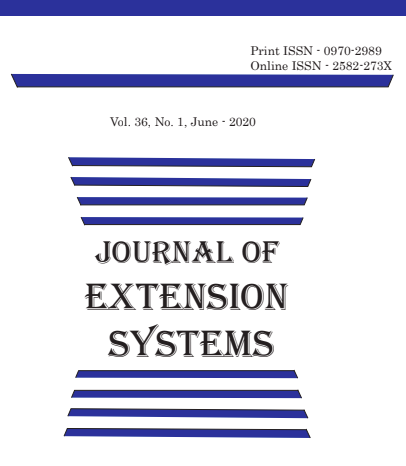ECOLOGICAL STRAIN AND ENVIRONMENTAL IMPACTS OF SABARIMALA PILGRIMAGE
DOI:
https://doi.org/10.48165/jes.2022.38.2.1Keywords:
Sabari mala;Sabari mala;, Environment, Deforestation, River pollution, Devaswom BoardAbstract
Sabarimala, one of the most popular pilgrimage destinations in South India, receives millions of visitors each year. Millions of pilgrims gather here to bathe in the Pampa River, also known as Dakshina Kashi, and offer devotion to the deity. The temple is located in a forest area within the Periyar Tiger Reserve. The sheer number of worshipers attending the shrine creates considerable environmental issues. This study looks at the ecological consequences of pilgrimage, specifically deforestation, water pollution, and biodiversity loss in the Periyar Tiger Reserve. It examines the conflict between religious practice and environmental deterioration and evaluates the efficacy of current sustainability initiatives. The study also covers policy solutions, environmentally responsible pilgrimage practices, and community involvement in conservation activities. By emphasizing the delicate balance between faith and the environment, the study calls for sustainable pilgrimage management to ensure that Sabarimala’s hallowed territory is conserved for future generations.
Downloads
References
Aji, A. T. (2005). Impact of Pilgrimage on the environment of Sabari mala with Special reference to river Pampa, unpublished PhD Thesis, University of Kerala, Retrieved from http://hdl.handle. net/10603/170657
Ameerudheen, T. A. (2018, November 19). Sabarimala is not just a religious or political issue. It is also an environmental cri sis. Scroll. In. Retrieved from https://scroll.in/article/902220/ sabarimala-is-not-just-a-religious-or-political-issue-it-is-al so-an-environmental-crisis
Down to Earth. (1997). Pilgrimage or carnage. Retrieved from https://www.downtoearth.org.in/news/pilgrimage-or-car nage-24361
Gaur, Mahendra. (Ed.). (2006). Indian Affairs Annual 2006: Parlia ment Vol. 4, New Delhi: Kalpaz publishers.
GOK.(1984). Kerala Devaswom Administrative Reform Com mission Report (K. P. Sankaran Nair Commission Report), (1984), Ernakulam: Government Press.
Gurukkal, Rajan. (2018, December 23). Sabarimala: The past and present, The New Indian Express, Retrieved from https://in dianexpress.com/article/ opinion/columns/sabarimala-tem ple-lord-ayyappa-protests-5505598/.
John, S.P. (2020).Social Ecology of the Pamba Riverine at Sabari mala, The Mass Pilgrim Centre of Kerala, Journal of Emerging Technologies and Innovative Research, 7(7), 1253–1257. Re trieved from https://www.jetir.org/papers/JETIR2007463.pdf
KFRI (2000)Report on Environmental Impact Assessment of Diver sion of Forest Land at Sabarimala. (2000). Unpublished Re port, Peechi : Kerala Forest Research Institute (KFRI).
KLA.(1998).Issues of Environmental Pollution in Sabarimala, (1998), 10th KLA Committee on Environment, (1996-98), 13th Report, Thiruvananthapuram: Legislative Assembly Sec retariat.
Malhotra.(2005).Report on the Pilgrimage to Sabarimala- Human Problems and Ecology. (2005). New Delhi: Lok Sabha Secretar iat, Retrieved from http://164.100.47.193/lsscommittee/Pub lic%20Accounts/14_Public%20Accounts_18.
PAC.(2004). Sixty-third report Pilgrimage to Sabarimala Human Problems and Ecology (a preliminary report), Public Accounts Committee, Ministry of Environment and Forests
Rajagopal, P,K .(2018).Religious Freedom and Gender Justice: Women Entry Issue in SabarimalaTemple. Research Guru , Online Journal 11(4), March 2018 178-186,Retrieved from http://www.researchguru.net/volume/Volume%2011/
Issue%204/RG23.pdf
Rajagopal, P,K. (2021).Politics of Temple Admonistration in Kera la.Unpublished PhD thesis,University of Kerala.
Rajagopal, P,K. (2022). Politics, Governance and Religion: A Study on the Administration of Hindu Shrines in Kerala, Kalpaz Pub lications, New Delhi.
Singh Sardar, Buta.(2004).Pilgrimage to Sabarimala -Human Prob lems and Ecology , Ministry of Environment and Forest, vol. 64, No. 1, February 2004.
Published
Issue
Section
License
Copyright (c) 2025 Journal of Extension Systems

This work is licensed under a Creative Commons Attribution-NonCommercial-NoDerivatives 4.0 International License.

